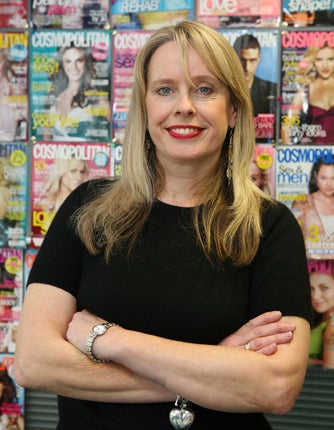The eternal truths, as revealed in a century of women's mags
As publishing empire NatMag celebrates, Susie Mesure leafs through some of its greatest hits

'Should wives have wages?" screams the headline.
The question cuts to the heart of the debate that is raging over child benefits cuts, which, critics argue, hit stay-at-home mums. But the year is not 2010 but 1924. "This problem of divorce" could be straight out of The Huffington Post's new section on divorce, which goes live next month, but ran instead while the bombs were falling in the middle of the Second World War.
The magazine is Good Housekeeping, that bastion of women's affairs that has graced coffee tables up and down the land since it was first published in 1922. Like its sister titles at the National Magazine Company, which marks its centenary tomorrow, the magazine's archives provide an extraordinary window into women's psyche through the ages.
Despite the decades between that first issue, which sold 100,000 copies, and the current one, which features the buxom Nigella on its cover, it is the similarities between women's issues that stand out, rather than the differences. As Lindsay Nicholson, Good Housekeeping's editor, says: "The truths that ran through the editor's letter in the first issue, including that the good housekeeper is the pillar of the house, are still all there today."
From drinking alcohol to finding a job, and flattering fashion to miracle creams, our sisters of yesteryear shared our concerns, hopes, and fears, according to a trawl through the NatMag archives. Not to mention sexual desires. Or "nervous tensions" as an article on vibrators – yes, vibrators – in Good Housekeeping in 1927 genteelly referred to the powers of the wonder stick. "I didn't think the Good Housekeeping archives were where you'd go for an article on vibrators," Nicholson says, of her research prior to writing her own piece recently, "but there it was, albeit approached slightly differently."
Even Cosmopolitan, explicit Cosmopolitan, has barely had to step on the gas when it comes to raunchy features. The Cosmo promise to reveal how readers of its November issue can "get inside his head, his bed, his mobile" would have read as true back in March 1972, when it first hit the stands in Britain, except that mobiles didn't yet exist. Instead, that first issue featured the cover line "I was a sleep-around girl"; all 250,000 copies sold out in three hours. A month on, rumours that a full-frontal male centrefold would grace the second issue meant an increased run of 450,000 took just two days to disappear from the shops.
"There's no difference between the mindset between the Cosmo woman of then and now," its editor, Louise Court, explains. "We've always been about eternal truths. About being the best you can be, living the life you want. It's interesting that the same topics come up. They just maybe have a different attitude today."
Harper's Bazaar, launched in 1929, then assumed its readers had "breeding, good taste, money, and a strong desire to be at the cutting edge," says Liz Atkins, author of 100 Years of the National Magazine Company. Little change, then, from the current issue, with its ads from Chanel, Louis Vuitton, and Cartier, and pictures of guests at a bash at Jemima Khan's house.
Even today's all-pervasive celebrity culture was reflected in those early issues. Back then, interest centred on "the talkies, which turned film stars into the new gods and goddesses, and they began to influence rather than follow fashion," says Atkins, although the stage also provided a fertile ground. A 1930 Harper's feature hailed the newcomers to the London theatre scene, John Gielgud and Celia Johnson, as just as important as the idols of the big screen. Harper's this month reveals Renée Zellweger's new love and the truth behind those Bridget Jones rumours.
Court does concede one big difference, however: the obsession with the intimate details of celebrities' lives today far outstrips previous interest. "Back in the day, everyone knew their neighbours and there was a sense of community. But today it is down to the likes of Jordan and Cheryl Cole to provide common ground between people because they all know who they are and are interested in the ongoing soap opera of their lives ," she says. "Celebrities then were seen in terms of aspiration, but readers today want to know that celebrities' lives aren't perfect either, because that makes them feel better about their own lives."
To mark 100 years since the American press baron William Randolph Hearst bought the British fiction magazine Nash's, which heralded the birth of NatMag, all the editors of its magazines, which include Best, She, Reveal, Zest and Company, will unveil the woman that they believe is the most influential in Britain today: J K Rowling.
"As a single parent who managed to pull herself out of poverty and create a massive entertainment empire along the way, she is very inspiring," Good Housekeeping's Nicholson says.
No doubt NatMag's readers in the 1920s would have felt just the same way.
Subscribe to Independent Premium to bookmark this article
Want to bookmark your favourite articles and stories to read or reference later? Start your Independent Premium subscription today.

Join our commenting forum
Join thought-provoking conversations, follow other Independent readers and see their replies